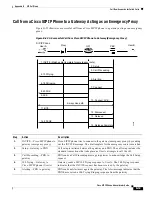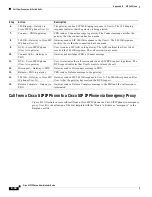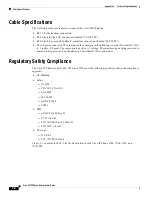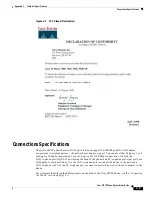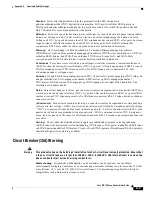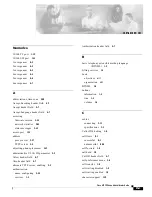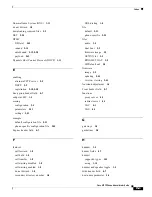
Glossary
GL-2
Cisco SIP IP Phone Administrator Guide
DSP
Digital signal processor.
DTMF
Dual tone multifrequency.
E
E.164
The international public telecommunications numbering plan. A standard set by ITU-T which
addresses telephone numbers.
E&M
Ear and mouth RBS signaling.
endpoint
A SIP terminal or gateway. An endpoint can call and be called. It generates and/or terminates the
information stream.
G
gateway
A gateway allows SIP or H.323 terminals to communicate with terminals configured to other protocols
by converting protocols. A gateway is the point where a circuit-switched call is encoded and
repackaged into IP packets.
H
H.323
An International Telecommunication Union (ITU-T) standard that describes packet-based video, audio,
and data conferencing. H.323 is an umbrella standard that describes the architecture of the conferencing
system and refers to a set of other standards (H.245, H.225.0, and Q.931) to describe its actual protocol.
H.323 RAS
Registration, admission, and status. The RAS signaling function performs registration, admissions,
bandwidth changes, status and disengage procedures between the VoIP gateway and the gatekeeper.
I
IVR
Interactive voice response. When someone dials in, IVR responds with a prompt to get a personal
identification number (PIN), and so on.
L
LEC
Local exchange carrier.
location server
A SIP redirect or proxy server uses a a location service to get information about a caller’s locations.
Location services are offered by location servers.


